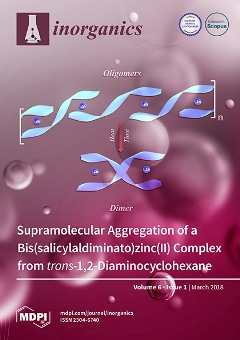The potential of 1-butyl-3-methylimidazolium tetrachloroferrate ([bmim]Fe(III)Cl
4) for replacing an iron(III) chelate catalytic solution in the catalytic oxidation of H
2S is attributed to its no side reaction and no degradation of the chelating agent. The catalytic oxidation product of water in non-aqueous [bmim]Fe(III)Cl
4 possibly has an influence on the oxidative absorption of H
2S. Water and hydrophobic [bmim]Fe(III)Cl
4 mixtures at water volume percents from 40% to 70% formed separate phases after srirring, without affecting the oxidative absorption of hydrogen sulfide. Then, studies on the properties of homogeneous [bmim]Fe(III)Cl
4–H
2O mixtures at water volume percents in the range of 5.88–30% and above 80% reveal that these mixtures are both Brønsted and Lewis acids at vol % (H
2O) ≤ 30%, and only Lewis acids at vol % (H
2O) ≥ 80%. Raman spectra showed that [bmim]Fe(III)Cl
4 was the dominating species at vol % (H
2O) ≤ 30%, in contrast, [bmim]Fe(III)Cl
4 decomposed into FeCl
3·2H
2O and [bmim]Cl at vol % (H
2O) ≥ 80%. Further research on oxidative absorption of H
2S by homogeneous [bmim]Fe(III)Cl
4–H
2O mixtures demonstrated that [bmim]Fe(III)Cl
4 was reduced by H
2S to [bmim]Fe(II)Cl
4H and FeCl
3·2H
2O was reduced to FeCl
2, at the same time, H
2S was oxidized to S
8. In addition, the decrease in acidity caused by increasing the water content increased the weight percent of absorbed H
2S, and decreased volatile HCl emissions. However, it is difficult to prevent the suspended S
8 generated at vol % (H
2O) ≥ 80% from the formation of sulfur blockage. Therefore, oxidative absorption of H
2S by [bmim]Fe(III)Cl
4–H
2O mixtures is feasible at vol % (H
2O) < 80% without sulfur blockage.
Full article





